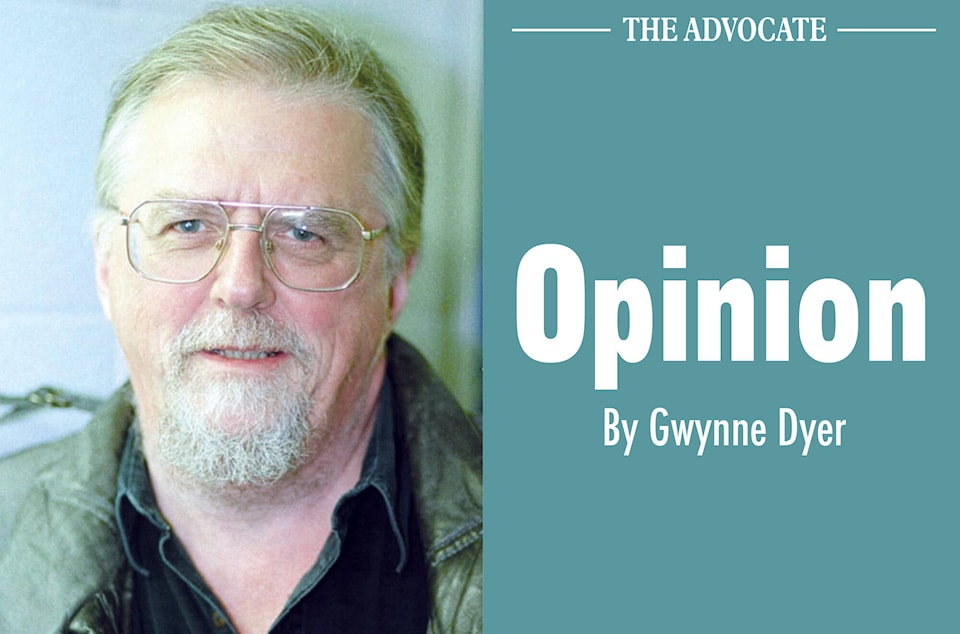Two months ago, when Russian tanks first rolled into Ukraine, every message from Washington or NATO about the invasion included a prominent passage saying what the western alliance would not do.
It would not send NATO troops to help Ukraine. It would give Ukraine some ‘defensive’ weapons but no ‘offensive’ ones, e.g., anti-tank missiles but no tanks. It would, in other words, allow Ukraine to lose, but only slowly. And under no circumstances would it do anything that gave Russia reason to fear that it might face military action by NATO.
How things have changed! In the past two weeks the United States has declared that some $2 billion worth of state-of-the-art weapons are on the way to Ukraine, including ‘Switchblade’ combat drones and self-propelled howitzers. Even Germany (which originally offered Ukraine nothing but 5,000 helmets) is sending modern anti-aircraft guns.
Rhetorically, the sky is the limit. In a press briefing at the Polish border last Monday after a quick visit to Kyiv, US Secretary of Defence Lloyd Austin said: “We want to see Russia weakened to the point where it can’t do things like invade Ukraine.”
It wasn’t even like Joe Biden’s slip of the tongue last month about regime change in Moscow. Secretary of State Antony Blinken, who was also on the Kyiv trip, chimed in to back Austin up: “I think the Secretary said it very well.” The official US goal is now to reduce Russia to a state so weak that it cannot credibly threaten Ukraine, and keep it there.
This presupposes, of course, that Russia has already suffered a decisive defeat at the hands of the Ukrainian army in the current war. It also implicitly assumes that the devastating economic sanctions that NATO and other countries have placed on Russia will continue after the war ends.
What has given them the confidence to move the goal-posts so dramatically? Not the military situation, certainly. Ukraine has successfully seen off the initial Russian attack, which was a simultaneous offensive on far too many different fronts with inadequate numbers on each of them. But the war is far from over.
The initial Russian strategy could only have succeeded if Ukraine was what Russian President Vladimir Putin imagined it to be: a ‘fake’ country with useless armed forces that would collapse at the first push. It wasn’t like that at all, of course, and it was the Russians who turned out to have the Potemkin army.
So victory in the first round went to Ukraine almost by default, but the second round is starting now and it will be more difficult. The Russians are now mostly concentrated on a single front in eastern Ukraine, which allows their traditional, methodical tactics, depending on bigger numbers and superior firepower, to function as designed.
Excessive caution has given way to over-confidence, and Biden, Blinken and Austin could wind up having their own diplomatic version of the ‘Retreat from Moscow’.
The rival scenario, in which the Ukrainians eventually stop the Russian advance and then drive them back, is more likely, but it would bring its own difficult and dangerous choices.
If the Ukrainians start taking territory back, where do they stop? On the line where the war started, leaving Crimea and some of Donetsk and Luhansk provinces in Russia’s hands. That would make sense, but it would be hard to convince bitter and vengeful Ukrainians to stop short of their pre-2014 border.
It would also be hard to persuade the Washington crew to stop there at the moment, but they need to be persuaded. The alternative is a new Cold War with Russia that could extend even beyond this decade.
Far better to stop at the 2022 border, declare a unilateral ceasefire, and leave Putin to twist in the wind. The Russians would get rid of him eventually, and then you could end sanctions in return for reparations for Ukraine.
To reach that highly desirable outcome, the Ukrainians first have to win their war, which is not yet in the bag. And then their friends would have to convince them that stopping short of total victory is in their own long-term interest. Not an easy sell.
Gwynne Dyer’s new book is ‘The Shortest History of War’.
